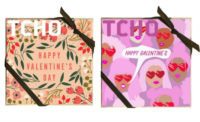If there’s one thing American consumers are sweet on, it’s chocolate, Packaged Facts says in a new report.
In terms of dollar sales, Valentine’s Day is the third biggest holiday/season for the $22-billion U.S. chocolate candy industry, according to “U.S. Food Market Outlook 2018.” Packaged Facts estimates holiday/seasonal chocolates account for 24 percent of all sales in the U.S. chocolate candy market. Valentine’s Day, with its heart-shaped boxes, trails Easter and Christmas in terms of market share, and scares up a victory over Halloween, which came in fourth.
“In America, the chocolate market enjoys incredible mass appeal, attracting everyone from high-end chocolate connoisseurs to the proverbial kids in a candy store to the amorous crowd purchasing sweets for their sweethearts or even themselves during Valentine’s Day,” says David Sprinkle, research director for Packaged Facts.
However, there is a side that’s not as rosy, Packaged Facts says. Changes in consumer demands for indulgent treats, the trend toward healthier eating and snacking, and the growing negative image of sugar are among the issues facing the chocolate market. There are also concerns over the cocoa farming process, as well as over the supply of cocoa and other ingredients, which affects prices. Additionally shifts in shopping behavior such as self-checkout and online purchasing could decrease impulse purchases, which drive a high level of chocolate sales.
Nonetheless, there remains strong consumer devotion to confectionery products and the growing perception of these products as an accessible luxury creates opportunities to direct the consumer toward premium products, both in terms of everyday usage and holiday/seasonal purchases.





